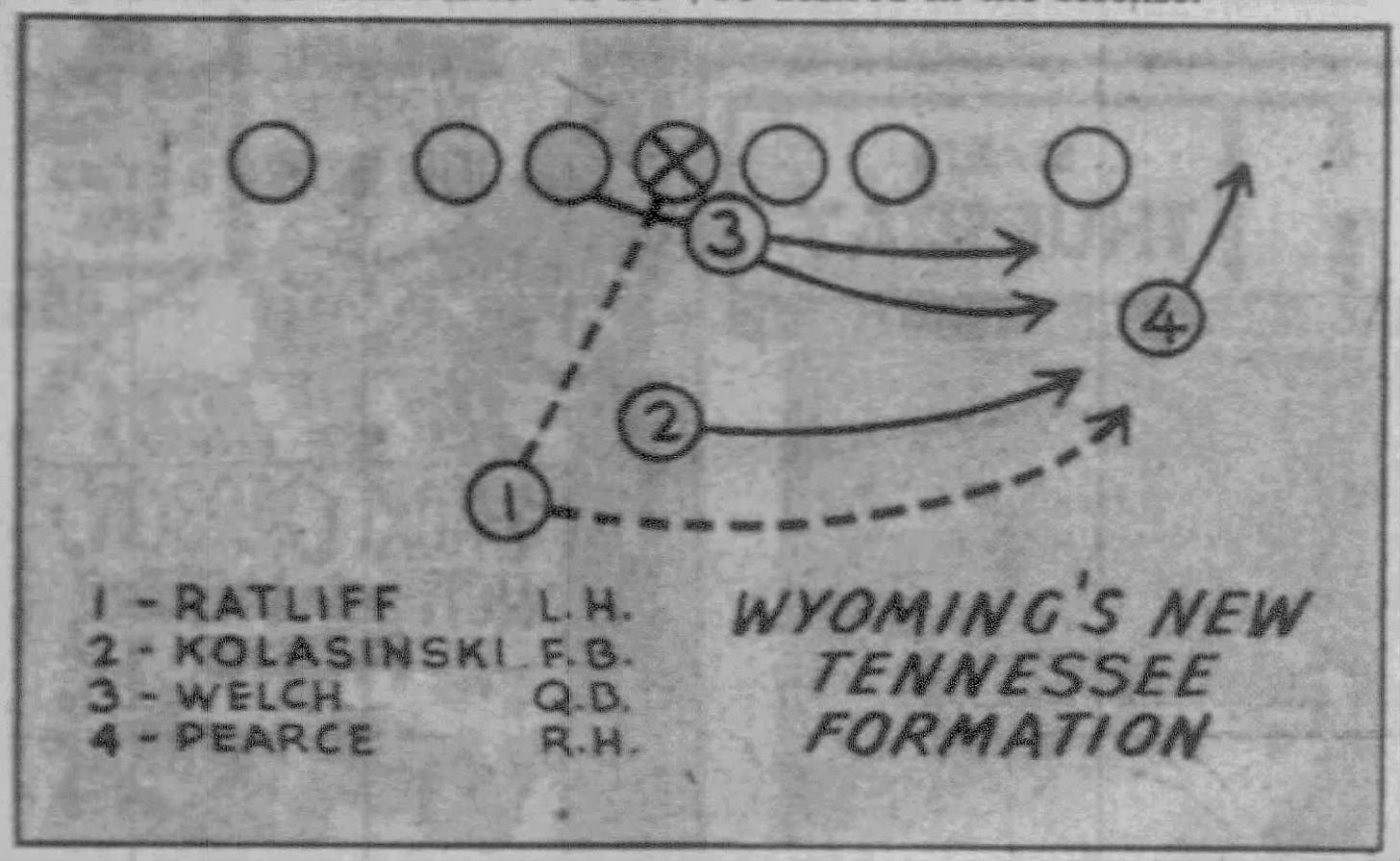Today’s Tidbit… The Sidesaddle Quarterback and Tennessee Formation
Football’s early quarterbacks aligned directly behind the center or slightly offset to receive the snap as the ball rolled or bounced back after the center snapped the ball with his foot. Since the player receiving the snap -typically the quarterback- could not run with the ball, he quickly tossed or handed it to a teammate.
When the rules changed early last century, allowing the player receiving the snap to run with the ball, some thought another deep back might replace the quarterback position. Instead, offenses like the Single Wing kept the quarterback for his play-calling and blocking roles, though they often moved him one or two positions down the line on the strong side.
An alternative approach was the sidesaddle quarterback, made famous in Bob Neyland’s Tennessee Formation that took the Volunteers to the Sugar, Rose, and other bowls in the 1930s. The sidesaddle was essentially a Single Wing with the quarterback positioned just behind the line and between the quarterback and strong side guard. Uniquely, the quarterback stood or squatted perpendicular to the scrimmage line facing the formation’s weak side.

This positioning allowed the quarterback to take a direct snap as needed while still allowing the long snap to the tailback or fullback. The snap to the deep backs, followed by the quick dive to the weak side, foreshadowed a key element of the Modern T formation that arrived in 1940, yet it retained all the power of the Single Wing. Additionally, the quarterback’s positioning accentuated his ball fakes as he spun or reversed out of his sidesaddle position.
Images of quarterbacks in a sidesaddle alignment are difficult to find, though film clips of Tennessee using the arrangement are available. Here are a few.
This first clip from the 1939 Orange Bowl (via College Football Historian) shows the sidesaddle quarterback's ball faking and misdirection trickery.
The clip embedded below is from Vol Report: Flashback -1939 Tennessee-NC State. (The embedded clip starts at the 0:13 mark. After that, continue watching or skip ahead to 0:52.)
The success of the T formation after WWII spurred Single Wing enthusiasts to employ the sidesaddle quarterback. Former Tennessee player Bowden Wyatt used the Single Wing version at Wyoming in 1947 before moving on to Arkansas and Tennessee. His successor, Phil Dickens, continued using it with the Cowboys and took it with him to the Indiana job.
Others used the sidesaddle with the T formation. John McLaughry ran it at Amherst and Brown in the second half of the 1950s, and Hal Mitchell used it at BYU in the early 1960s.
Dick Beede, Youngstown State’s coach best known for inventing the penalty flag, had his quarterbacks ride sidesaddle in the late 1960s and early 1970s, making Ron Jaworski one of the last college quarterbacks to do so.
Football Archaeology is reader-supported. Click here to buy one of my books or otherwise support the site.




I had no idea they hung onto it for that long. Great info.
Here’s a film of the 1943 Sugar Bowl with Tennessee running the side saddle quarterback. The first time I watched this I was wondering about that formation. Thanks. https://youtu.be/r4s_3NXe6Xw